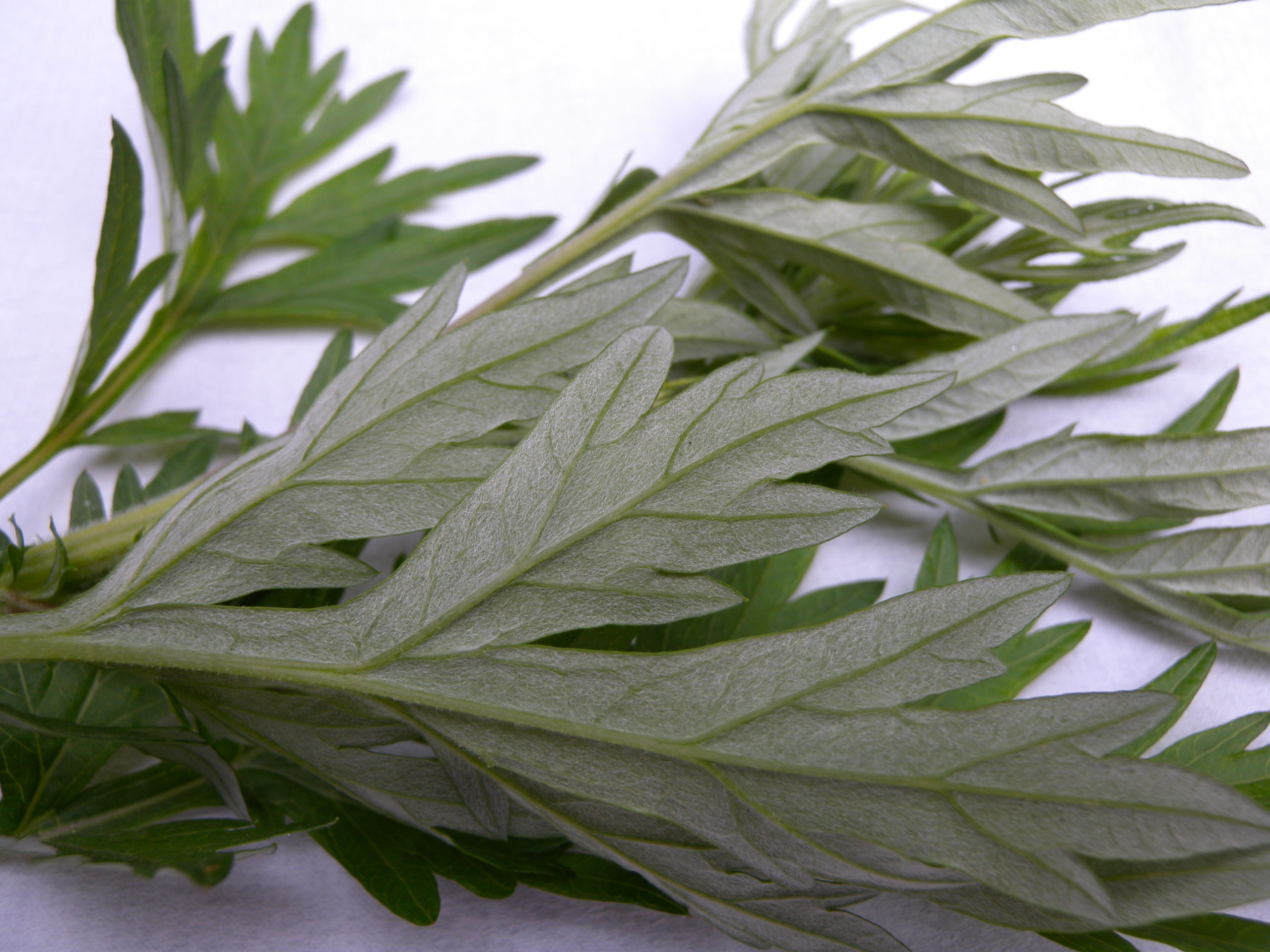 _The backside of the leaves from which “moxa” – the material used for moxibustion is manufactured.
_The backside of the leaves from which “moxa” – the material used for moxibustion is manufactured.

Teaching the practice of moxibustion
If people are interested in applying moxibustion to themselves, I offer instructions in the basic techniques and possibly recommendable acupoints.
Please let me know, when you are interested. I am sure, we can find some time to make you familiar with this very useful treatment modality. In a time when the reliance on medical services is not to be taken for granted any longer, the ability to help yourself (at least to a certain degree) is for many people VERY reassuring.

The technique of moxibustion
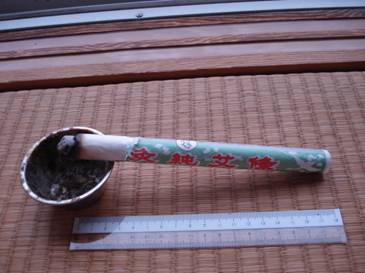 | This kind of Moxa “cigars” can be used, if the treatment with moxa directly on the skin is for some reasons either not desirable or possible. Although this may not be bad, personally I would consider the “real” moxa treatment of burning the cones on the skin as more effective. |
 | A small amount of moxa material. With this little amount, which I picked up with two fingers, you probably can make something like 50 of the little moxa cones shown below. |
 | These are two coasters covered on their back sides with cork. They should be available for little money in household stores. Regarding the coating with cork there are two type: a coarse one and a fine one. The fine type is better suited. |
 | This is a very small amount of moxa that is placed on one of the coasters, while the other coaster is gently placed on top of it. |
 | Here I am preparing to put the second coaster on top of the other. They are just positioned on top of each other, but not pressed together and then moved against each other without any force. |
 | After the coasters have been moved a few times back an fourth on each other, the above shown moxa ‘lump’ is transformed in 1-2 seconds into this kind of moxa ‘string’: approximately 3-4 cm long and 2-3 mm thick. |
 | Here I hold the just prepared moxa string between thumb and index finger of the left hand so that it protrudes about 1 cm. |
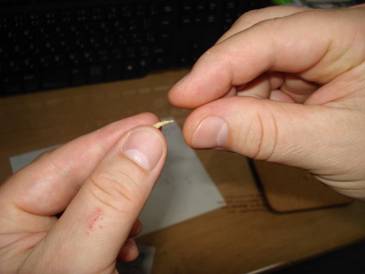 | Here I prepare to ‘pick’ the tip of the moxa string with thumb and index finger of the right hand. |
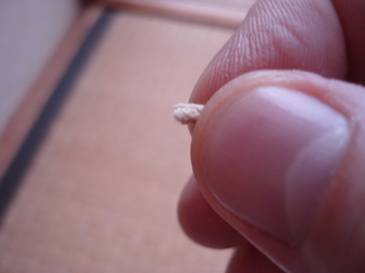 | The picked portion of the moxa in my right hand. Its basis (on the left) should remain soft and fluffy. The other end (between my fingers) is formed by rolling it between the fingers 1-2 times back and forth into a pointed tip. |
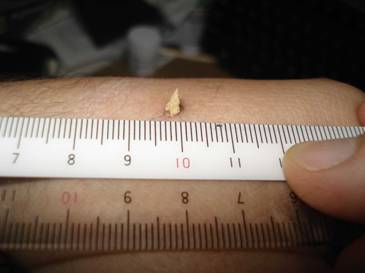 | The thus formed moxa cone is placed on the skin at a site, marked beforehand with a marker etc. Diameter at the basis is about 2-3 mm; height is about 3-5 mm. Apply a tiny amount of (any kind of) creme to the skin before you put the cone on it. This will serve as a sort of glue, preventing the moxa from falling off. |
 | Enlarged view of a moxa cone placed on the skin and ready to be burnt. The twirled tip can easily be lighted with a piece of buring incence stick. Bring the ‘base’ of the burning section of the incense stick (triangular in shape) with a little rotating movement close to the moxa cone tip. |
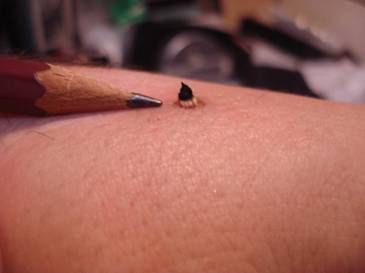 | Burned moxa cone. If you place thumb, index and middle finger around the cone before it burns completely down, the lack of oxygen between your fingers causes it to go out. In this way you can regulate the intensity of the heat produced by the burn. |
(2) Applications
… in preparation …

List of hashtags I added. This is a test.
鍼 #針 #鍼灸 #鍼灸院 #東洋医学 #伝統 #職人 #葉山 #逗子 #おきゅう #肩凝り #眼精疲労 全身疲労 #難病 #履歴 #歴史 #自伝 #お話 #ドイツ人 #トーマス #トーマス鍼灸院 #鍼灸師 #英語 #ドイツ語 #用語集 #翻訳 #通訳 #低所得者 #丁寧な説明 #書籍 #acupuncture #moxibustion #clinic #English #German #Hayama #Zushi #StiffShoulders #LowBackPain #SystemicDiseases #LowIncome #alternativetherapy #holistic #interview #personlized #books #translation #interpretation #glossary #oriental #medicine #books #recommend #therapy
![]()
